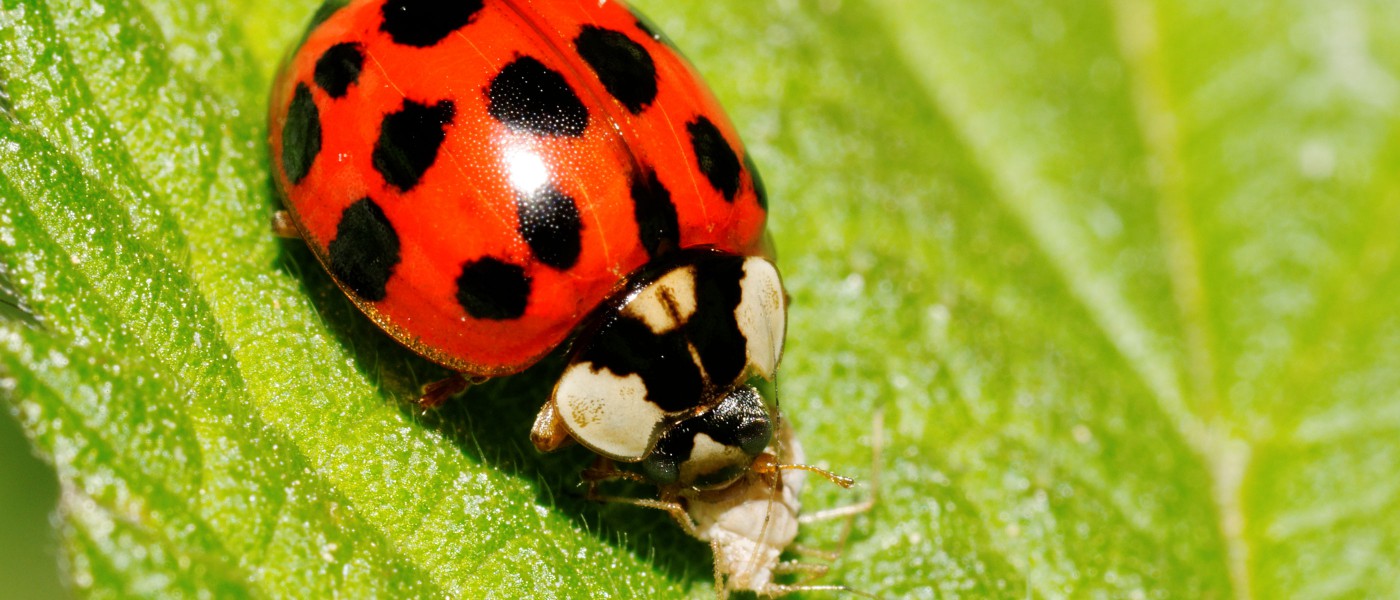Houseplant Pest Control
Most of us with a collection of indoor plants have noticed that pest problems seem to worsen in the winter months. Plants stressed by the dry, dim days of winter are more susceptible to aphids, mites, gnats, and other pests. Though prevention is always the best medicine, if a problem arises, there are ways to deal with indoor plant pest problems without using harmful chemicals.
Quarantine New Plants
Many infestations are initiated by bringing infected plants into the house. Be sure to carefully check nursery plants before purchasing them, and once you do, quarantine them in a separate area for one to two weeks before placing them near the rest of your houseplants. Similarly, examine houseplants summered outdoors before bringing them inside for winter, including the leaves, stems, and soil. At the very least, give them a good spray with the hose to dislodge unwelcome arthropods.
ID Your Pests
Knowing how to spot common houseplant pests will help you choose the right method to manage them. The most common indoor plant pests include the following:
Spider mites (Tetranychus urticae) are tiny mites almost impossible to see with the naked eye, but they leave telltale webbing, especially on the undersides of leaves and inner joints of plants. Spider mites injure plants by sucking nutrients from leaves. Attacked leaves will have yellow stippling. As the infestation gets worse, the leaves will turn completely yellow and brittle and eventually drop.
Mealybugs (Pseudococcus longispinus) are small cottony-white insects most often found attached to the plant at the stem joints or just under the soil where the roots and stem meet. The surface of plants infested with mealybugs may become covered with sticky drops called honeydew that turn moldy black. Leaves yellow and curl. Mealybugs are generally considered to be the most destructive houseplant pest.
Brown soft scale insects (Coccus hesperidum) look like waxy disklike bumps or scales on the stems or undersides of leaves. The female scale insect has a hard shell-like covering; males are smaller, softer, and harder to see. Like mealy bugs, scale insects slowly suck the sap from stems and produce honeydew that develops a sooty mold. The leaves of affected plants turn yellow and drop.
Aphids (superfamily Aphidoidea) are small pear-shaped insects with soft bodies that come in a variety of colors depending on the species. They can be seen on the undersides of leaves, on tender new growth, and on flower buds, usually clustered in groups. Like mealybugs and scale insects, they produce honeydew. Aphids reproduce rapidly, so infestations can occur quickly.
Fungus gnats (Bradysia species) are small, winged insects that resemble mosquitoes but do not bite. The translucent wormlike larvae can be found in soil, where they feed on fungi and decaying plant matter. Adult gnats don’t harm houseplants but are a nuisance as they fly around houseplants and windows.
Nontoxic Pest Management
Changes in cultural practices—adjusting light, temperature, humidity, or nitrogen levels—can arrest many houseplant pest infestations. For example, excessively moist soil may attract fungus gnats, and plants in hot, dry sites are prone to spider mites. Learn the best balance of conditions for your plants and keep it consistent.
Insecticidal soaps are made from a combination of oils and potassium salts diluted in water. They control pests including spider mites and aphids. Soap sprays work on contact and don’t have residual effects, but several treatments may be necessary to completely eradicate an infestation. There are many recipes available online to create your own insecticidal soap as well as many commercially available brands.
Diluted sprays of horticultural oils such as neem seed extract can control scale insects, aphids, and spider mites. These highly refined oils work by smothering adult insects and preventing eggs from hatching; usually more than one treatment is required to eradicate the pests.
While it may seem counterintuitive to bring critters indoors, a balance of organisms is crucial for long-term plant health. Biological pest control employs beneficial insects such as lady beetles and green lacewings to control pest populations. The naturally occurring soil bacterium Bacillus thuringiensis var. israelensis (H-14 strain) is a commonly used microbial insecticide, sold as Gnatrol and Knock-Out Gnats and used to control fungus gnat larvae.
Systemic insecticides such as acephate control aphids and scales. These insecticides are sold as granules or slow-release stakes that are added to houseplant soil to be absorbed through a plant’s roots into the plant’s vascular system. It is harmless to plants; pests are dosed with the insecticide when they feed on the plants’ stems or leaves.
Additional Resources
Natural Insect Control: The Ecological Gardener’s Guide to Foiling Pests, edited by Warren Schultz (Brooklyn Botanic Garden, 1994). Describes plant pests and offers myriad effective, natural controls. See bbg.org/handbooks.


